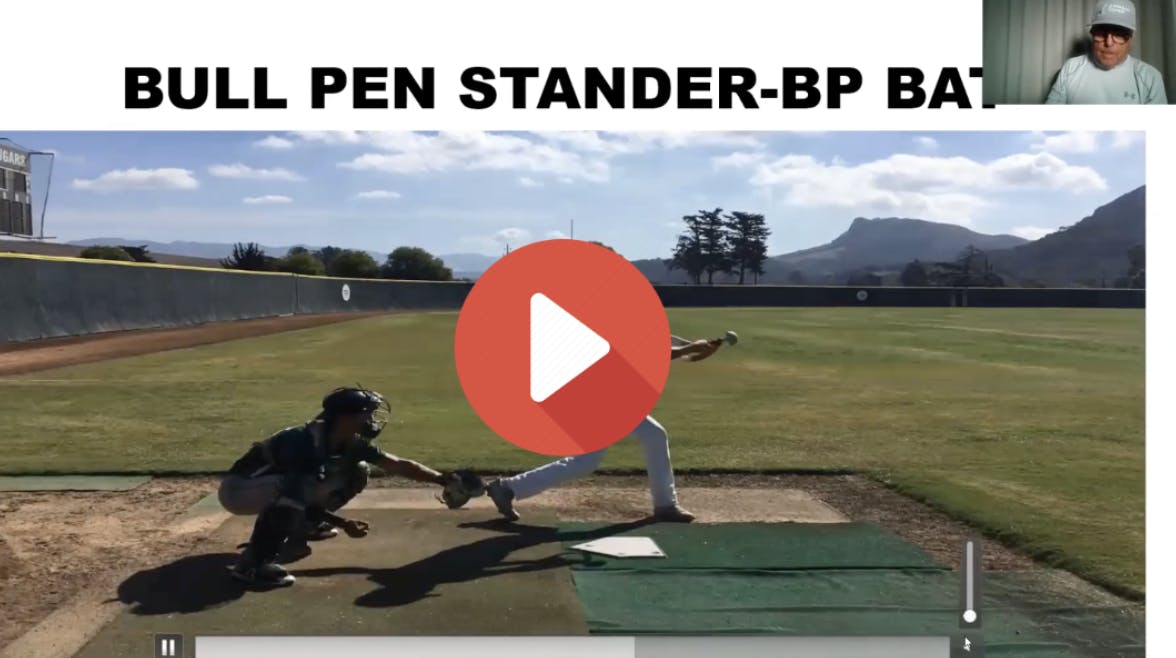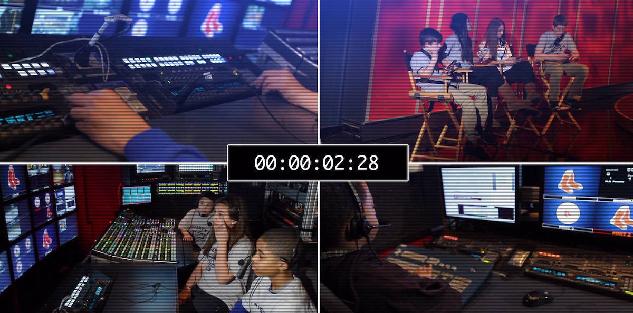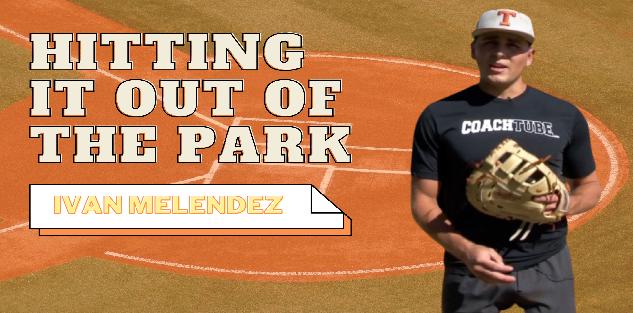Featured courses
- Understanding The Shift by Brandon Ogle
- Two Drills to Improve Outfield Movement and Communication by Grant Young
- The Ultimate Resource For Coaching Youth Baseball by Jackson Chlebowy
- Become a Master at Bunting by Brandon Ogle
- 5 Reasons Why There Is More To Good Base Running Than Just Speed by Brandon Ogle
- Three Injury-Prevention Tips For Your Offseason Pitching Program by Grant Young
- How to Teach Hitting to the Next Generation by Grant Young
- Developing Defensive-Minded Baseball Catchers by Grant Young
- 3 Baserunning Tips to Score More Runs in Baseball by Grant Young
- 5 Outfield Drills to Work on in Season by Alec Burris
- Keys For Scoring More With Runners on First and Third Base by Grant Young
- How to Develop Your Game to Become a Five-Tool Player by Brandon Ogle
- 3 Coaches Share the Keys to Running Baseball Practice the Right Way by Grant Young
- Four Drills to Sharpen a Baseball Hitter’s Vision at the Plate by Grant Young
- Four Quotes to Hit Better With Two-Strikes by Grant Young
- Four of Former MLB Pitcher Juan Nieves’ Movement-Based Pitching Drills by Grant Young
- Two Tips For Developing an Elite Baseball Bullpen by Grant Young
- Overcoming the Four Challenges of Indoor Baseball Practices Because of Weather by Grant Young
- Three Tips to Make Your Baseball Team Mentally Tougher by Grant Young
- Three Priceless Philosophies to Motivate Your Baseball Team by Grant Young
- Three Offseason Baseball Drills to Simulate Competition by Grant Young
- Three Baseball Offseason Strength and Conditioning Essentials by Grant Young
- Important Ways to Improve Your Baseball Team’s Baserunning by Grant Young
- Three Ways to Perfect Hitting Mechanics From an MLB Icon by Grant Young
- Catchers can influence pitchers...for bad or good by Drew Johnson
- Throwing Strikes and Playing Good Defense Equals Wins by Jose Ortiz
- Legendary Indiana Head Baseball Coach Bob Morgan’s Offensive Theory by Grant Young
- Tennessee Head Baseball Coach Tony Vitello on How to Practice Baserunning by Grant Young
- Three Great T-Ball Drills For Youth Baseball Players by Grant Young
- How to Manage a Baseball Pitching Staff by Grant Young
- Three Uncommon Tips to Become a Better Hitter by Grant Young
- How a Baseball Coach Can Develop Strike Throwers by Grant Young
- Drills to Develop Elite Baseball Outfielders by Grant Young
- Baseball Training Exercises to Strengthen Arm and Bat Speed by Grant Young
- How to Use Bunting to Score More Runs by Grant Young
- How To Build An Elite Baseball Infielder by Grant Young
- Three Drills to Improve Your Baseball Team's Infield Play by Grant Young
- Three Keys to Curating a Pitching Staff’s Success by Grant Young
- 3 Techniques to Develop a Baseball Player’s Hitting Approach by Grant Young
- How to Cultivate Confidence Within Your Pitchers by Grant Young
- 5 Every Day Drills To Help You Become A Better Catcher by tyler Linderman
- How to Throw A Curveball by Brandon Ogle
- How to Assemble a Lock-Down Bullpen by Brandon Ogle
- How to Throw a Sinker by Brandon Ogle
- How to be a Smart Baserunner by Brandon Ogle
- Improving a player's slugging average by Phillip Woolgar
- The 8 Fundamentals of Pitching by Drew Johnson
- How to Throw a Deceiving Changeup by Brandon Ogle
- Step Up Your Outfield Defense With These Three Drills by Jose Ortiz
- 8 Baseball Drills Every Player Should Practice by Drew Johnson
- How To Become An Elite Defensive Outfielder by Tyler Linderman
- 5 Tips For Crushing A Curveball by Johnny Grassi
- LEGENDS FOR YOUTH INCLUSION BASEBALL CLINIC by Phil
- Fourteen Ways To Turn A .300 Hitter Into A .210 Hitter by Jay P. Granat, Ph.D.
- How To Become The Ideal Leadoff Man by Brandon Ogle

How to Teach Hitting to the Next Generation
- By Grant Young
Many aspects of hitting will always remain timeless.
Hitters will always want to shorten up and defend the zone with two strikes. They’ll be looking for a fastball or sitting on something else specific during a hitter’s count. And they’re sure to assert that they’ve checked their swing even if it’s clear they didn’t.
Yet, many components of youth baseball hitting (especially about how it’s taught) have evolved in the modern era. For example, most hitting coaches have come around to having their hitters try to launch fly balls instead of trying to smack ground balls.
But there are still some coaches who are struggling to adapt their lessons to the new generation of hitters. And that’s where Jerry Weinstein comes in.
Coach Weinstein is a legendary baseball coach who most recently served as the Catching Coordinator for the Colorado Rockies. Coach Weinstein also managed Team Israel at the 2017 World Baseball Classic qualifier, and returned as the head coach in the main tournament, managing Team Israel at the 2017 World Baseball Classic in South Korea and Japan in March 2017, where the team was 4-2 overall in the tournament. He has also served as the Rockies Offensive Coordinator and the manager of the Rockies Class A affiliate.
Before joining the Rockies, Weinstein, who has over 40 years of coaching experience, was the pitching coach for the Cal Poly (San Luis Obispo) baseball team from 2001-05. Prior to his coaching stint with the Mustangs, Weinstein was the Los Angeles Dodgers Director of Player Development in 2000 and 2001 and also served as the Dodgers' catching coordinator in 1999.
Coach Weinstein’s ‘New Age Hitting With Jerry Weinstein’ course is a masterclass on instilling modern offensive concepts into any team. We’ve pulled a few of the course’s most pertinent lessons to give you an understanding of how Coach Weinstein’s wisdom can propel your offense to a new stratosphere of success.
Hitting is Balance, Rhythm and Timing
Coach Weinstein is convinced that success as a baseball hitter comes down to three components: balance, rhythm, and timing.
According to Coach Weinstein, balance in hitting is, “being in your best athletic position throughout your swing.” He goes on to add that understanding the length-tension relationship (where muscles are being stretched during a swing) is an X-factor for hitters.
This is essentially another way of phrasing the Physics law, “every action has an equal and opposite reaction”. And Coach Weinstein mentions it to make it clear how important the load and backswing are when it comes to hitting.
Coach Weinstein also discusses the importance of rhythm. In order to facilitate this he deems players should work to, “control movement to create timing as a result of small moves.”
These small moves will depend on each hitter. It can be a swaying of the hips, jerking of the bat, or movement of the hands. But any means of creating rhythm (and, more importantly, aligning oneself with the pitcher’s rhythm) is a huge asset for the modern hitter.
Coach Weinstein then combines balance and rhythm to discuss timing, which is his major key to a successful hitting swing.
Coach Weinstein makes sure to note that every hitter’s swing is going to be (and should be) different. All that matters is that the swing is repeatable, accurate, and keeps the hitter healthy.
The goal for these three crucial components to a hitter’s swing is to consistently produce the best version of each hitter.
Bullpen Stander (Drill)

When it comes to drills Coach Weinstein believes hitters should be taking part in, one underutilized one is what he calls the bullpen stander drill.
This drill is simple in practice: have your hitters stand in during your pitchers’ bullpen sessions. But Coach Weinstein suggests that hitters should not just be standing in and tracking the pitches they see. They should also be making actual decisions on whether to swing or take.
This is an extremely effective drill for the hitter because it forces them to replicate the decision that they must make at the plate during each at-bat. Not to mention that it will afford them extra opportunities to see different pitches out of a pitcher’s hand, which should benefit them as well.
Pitchers will also benefit from having a hitter standing in and tracking their pitches. In addition to this helping them simulate a real appearance, the hitter can also give the hitter feedback on what they’re seeing out of the hand, and whether a certain pitch looks like a ball or strike depending on their swing decision.
Therefore, this bullpen stander drill benefits pitchers and hitters alike.
Off Center Oppo-Pull
Another great drill that Coach Weinstein recommends is the Off-Center Oppo-Pull drill.
This drill takes place on the field during a typical batting practice session. Yet, rather than the BP thrower/L-screen being positioned in front of the mound, it will be moved off to in between the mound and third base line.
The goal here is for left-handed hitters to hit the ball in between the L-screen and the third base line without having any tail or topspin. You’ll also want to put a bat or piece of wood in front of the hitter’s feet so they don’t dive over the plate.
For right-handed hitters, their goal will be to pull the ball in between the L-screen and foul line (without spin or hook).
It can also be moved to in between the first base line and mound, which produces opposite effects for the hitter depending on whether they’re a righty or a lefty.
This drill will force the hitter to get a great feel for their barrel and see what their natural inclination is when it comes to driving the ball.



